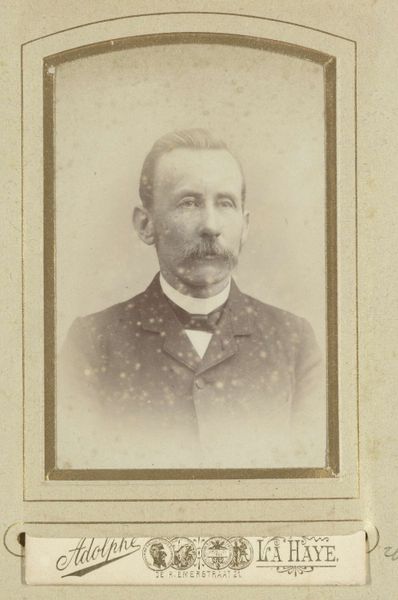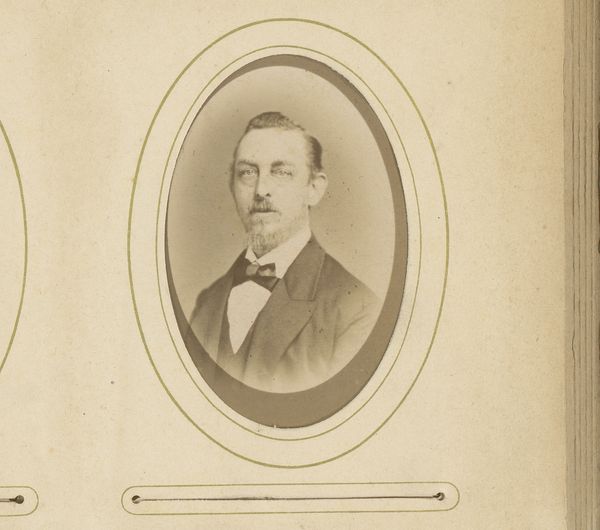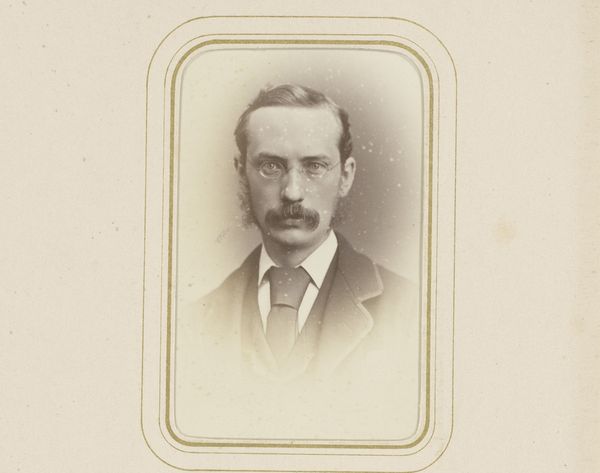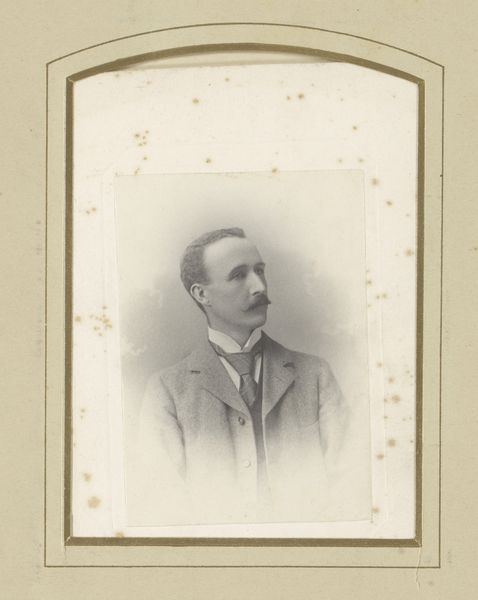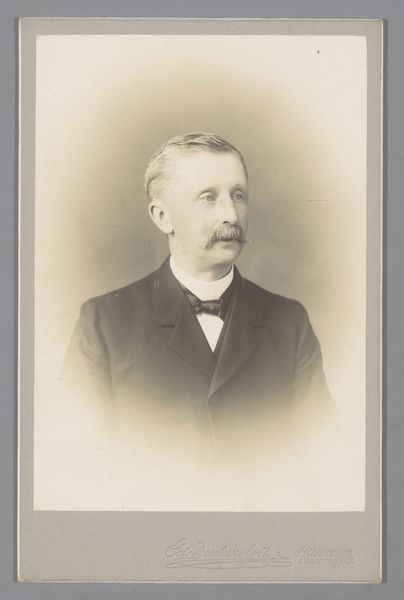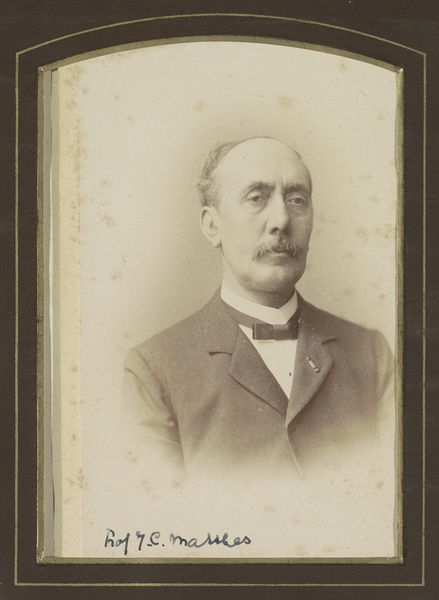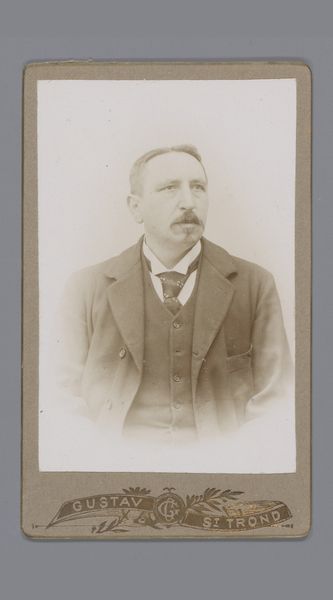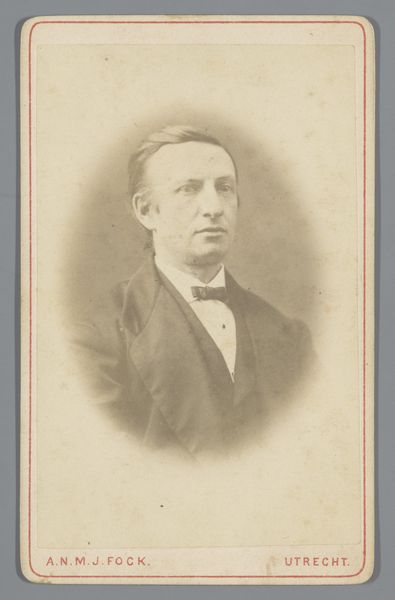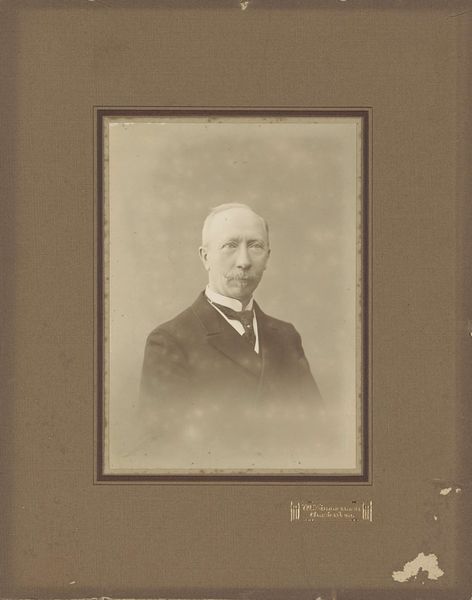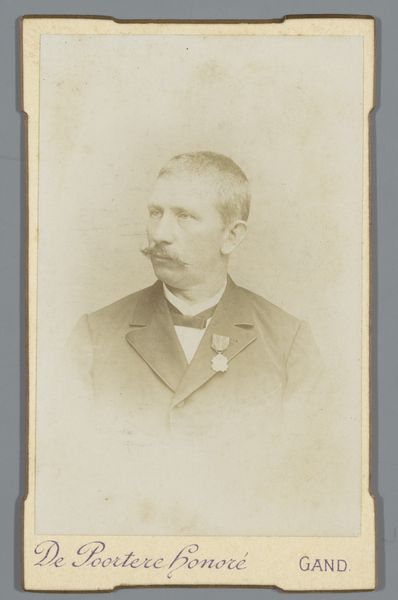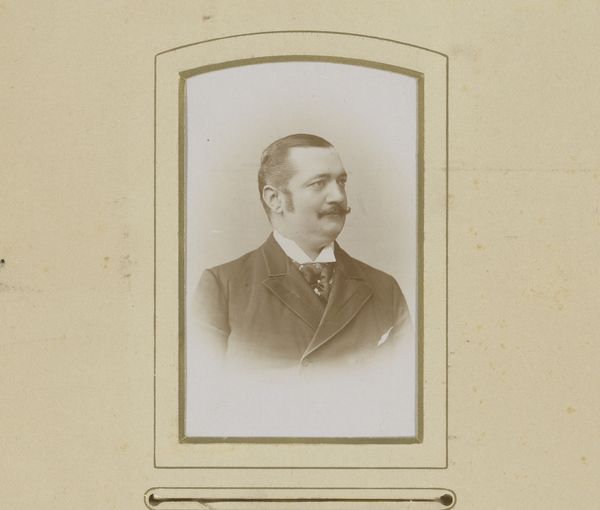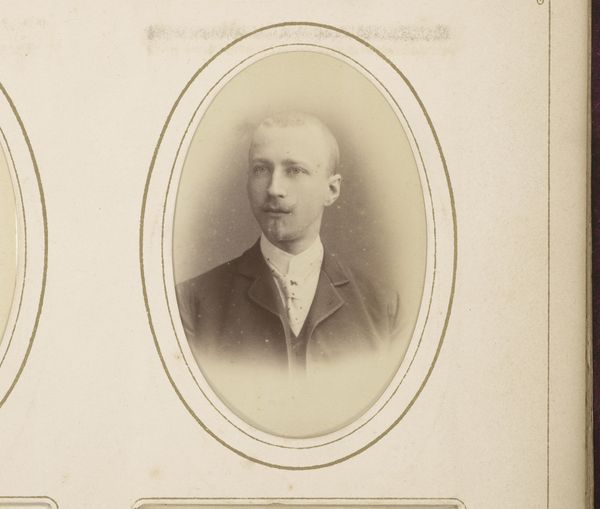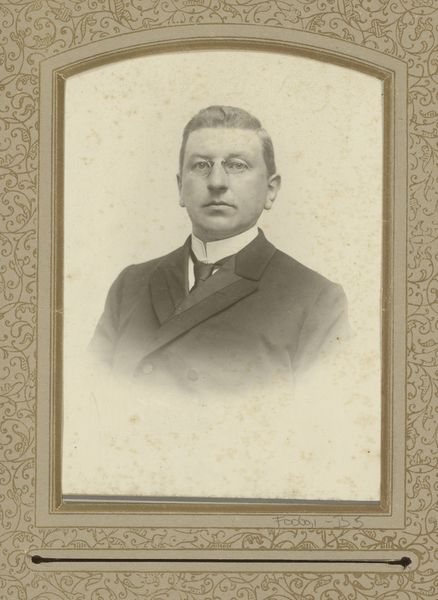
photography, albumen-print
#
portrait
#
photography
#
historical photography
#
portrait art
#
albumen-print
#
realism
Dimensions: height 138 mm, width 95 mm, height 260 mm, width 210 mm
Copyright: Rijks Museum: Open Domain
Curator: This intriguing piece is titled "Portret van J.B. Aug Kessler." We believe it was created sometime between 1880 and 1890. It’s an albumen print. What strikes you most about it? Editor: An air of Victorian solemnity. He looks almost like he’s staring directly *through* me, which is enhanced by the way he is centred within the photographic frame. There’s a ghostliness to the paleness of the image and how it blurs from the sternum downward, fading into an undifferentiated void. Curator: That “void,” as you put it, almost isolates him, doesn't it? Makes you consider him removed from any context. He could be anybody, or nobody. Although, his name, Kessler, suggests someone of significance from that era. Editor: Precisely. Looking at the details, the immaculate grooming, the tailoring of the jacket, even that self-assured gaze, speak volumes about bourgeois identity in the late 19th century. It’s almost like a performance of power and respectability for the camera. The photographic lens became a societal mirror, demanding a specific image construction to align with moral virtues, and economic clout. Curator: True. Photography in this period, especially portraiture, functioned quite differently from how we perceive it today. Now, it is mostly informal, often even intentionally unflattering. Whereas a piece like this suggests such considered formality and almost stoic reserve. You do not feel invited, but rather, you admire, and that only at a great distance. There’s an austere grandeur here that seems foreign to modern eyes. Editor: That perceived distance may reveal anxieties prevalent during that period: fears about social mobility and maintaining a certain image in a rapidly changing world. And that makes me think of a larger debate of photographic ethics of those years—was this art for truth or merely a social marketing? Curator: An interesting point to ponder—as is whether Herr Kessler himself, wherever he may be now, would consider this to be a true representation, or merely a carefully manufactured performance, as you say. It seems impossible now to recapture exactly the intention or motivation. Editor: These historical photographs act like time capsules. A portal back to other periods in which norms are constantly under construction, in conflict, always being shaped. That it does, rather vividly, despite its seeming straightforwardness, to me that is an artwork of historical importance. Curator: A perfect thought with which to conclude. Thanks.
Comments
No comments
Be the first to comment and join the conversation on the ultimate creative platform.
